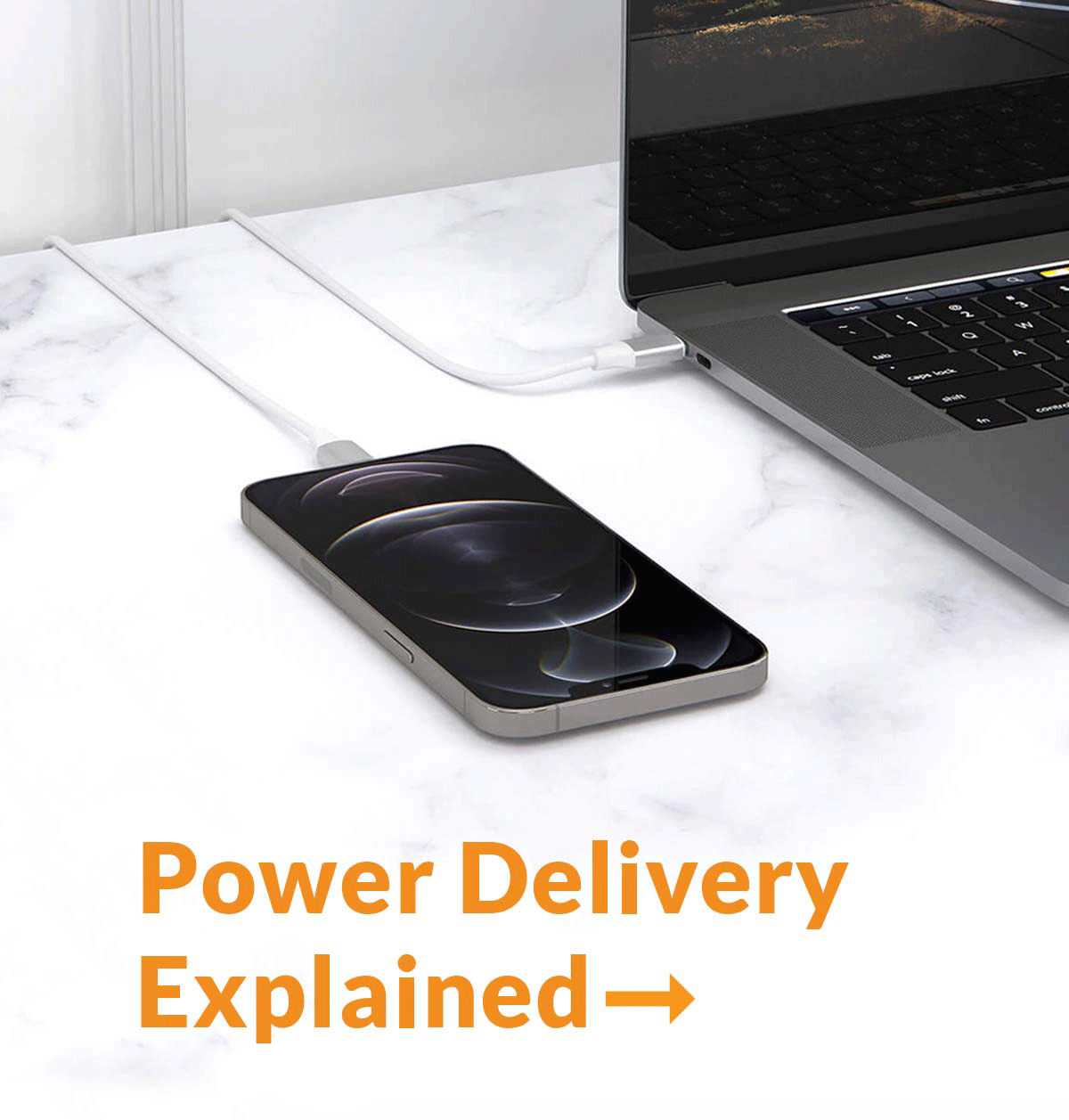USB-C Power Delivery Explained

USB-C Power Delivery Explained
The world of USB-C can be a little frustrating or confusing, even for the most educated tech gurus or aficionados. In a previous blog, we delved into many different iterations of USB-C and how they evolved throughout the last several years. You can read more about it here.
However, today, we’re going to focus on a different aspect of the USB-C world, USB-C Power Delivery.
What is USB-C Power Delivery?
USB-C Power Delivery, or PD, for short, is a fast charging standard that was introduced by the USB Implementers Forum, the creators of the USB standard. It’s an industry-standard open specification that provides high-speed charging with variable voltages up to 20V using intelligent device negotiation up to 5A at 100W.
Not only is it supported by Apple devices, but it’s also supported by Android, Google, and even Samsung devices, and it’s designed to deliver higher levels of power than standard charging solutions.
Normally, each device charged by USB will have their own separate adapter, but not anymore. One universal USB-C Power Delivery cord will be able to power a wide variety of different devices.
What devices have USB-C Power Delivery?
Normally, most newer smartphones all are compatible with USB-C Power Delivery. And, with up to 100W of power available, USB-C Power Delivery can charge larger devices, like tablets and laptops. All you need is the right wall charger, portable charger or battery pack and a USB-C cable, and you can bask in the ability to leave your bulky power cables at home.
Batteries and wall chargers that use USB-C Power Delivery can charge devices with up to 100W output using a USB-C connector. Do keep in mind, most Power Delivery chargers output at 30W of power because that’s towards the upper end of what most smartphones and tablets can handle.
What are the benefits of USB-C Power Delivery?
USB-C Power Delivery can charge your device up to 70% faster than standard 5W charging solutions. This means less time plugged in while your smartphone reaches 100% battery capacity.
The coolest part about PD is that USB-C Power Delivery has increased standard power levels up to 100W. This means your device will be able to charge much faster than before.
Another great feature of USB-C Power Delivery is the fact that the power direction is no longer fixed. In the past, if you plugged your phone into the computer, it would charge your phone. But with Power Delivery, the phone you plug in could be responsible for powering your hard drive.
Power Delivery will also ensure devices are not overcharged and will only provide the necessary amount of juice needed. While most smartphones won’t be able to take advantage of the added power, many other devices and computers will be able to.
Know your USB-C Power Delivery charging times
If you’ve ever wondered, “how long does it take to fully charge my iPhone or iPad?” We’ve compiled a list of popular iPhone models and iPad models as well as their fast charging times. Do note, all of the charging times below are to a full 100% charge.
- iPhone 13 = 1 hour
- iPhone 12 = 1 hour
- iPhone X = 1 hour
- iPhone 8 = 1 hour
- iPhone 8 Plus = 1 hour
- iPad Pro = 1 hour and 20 minutes
Without a doubt, USB-C Power Delivery is simply a much easier and a streamlined way to go about charging all of your devices.
Explore our best-selling USB-C Power Delivery chargers & cables!

